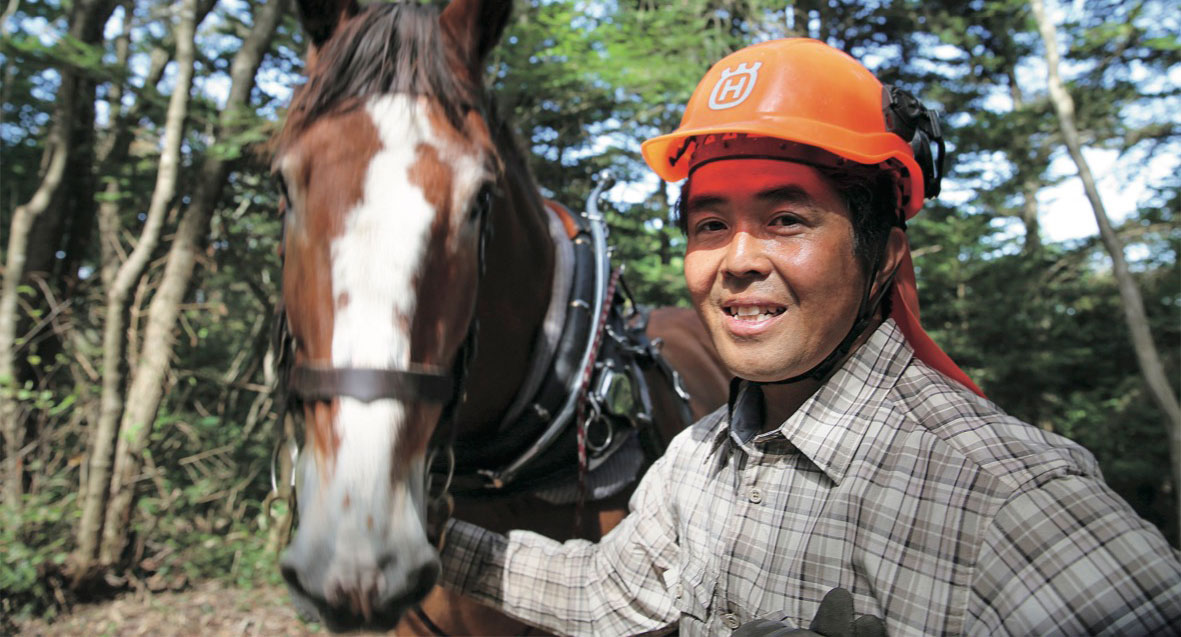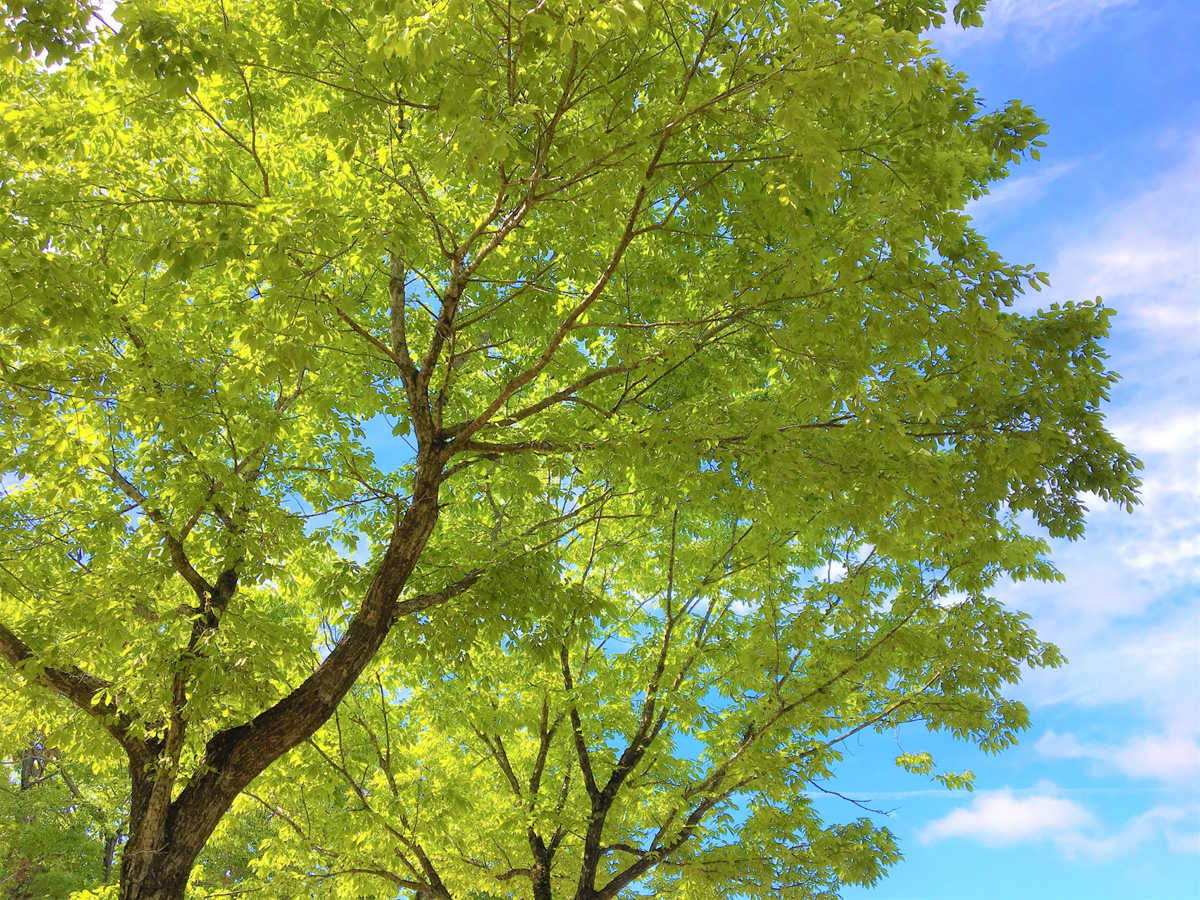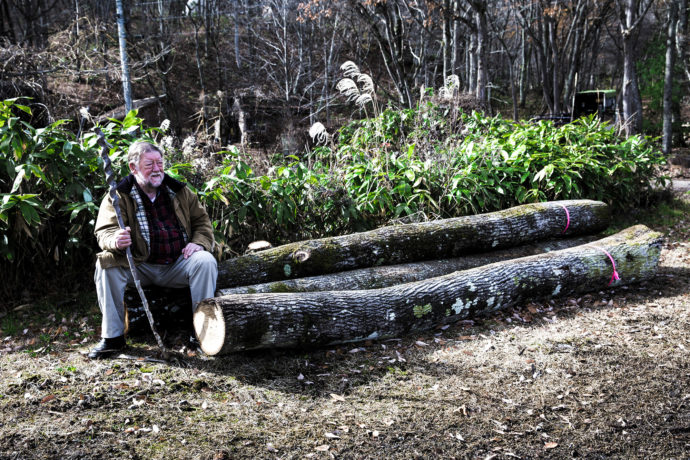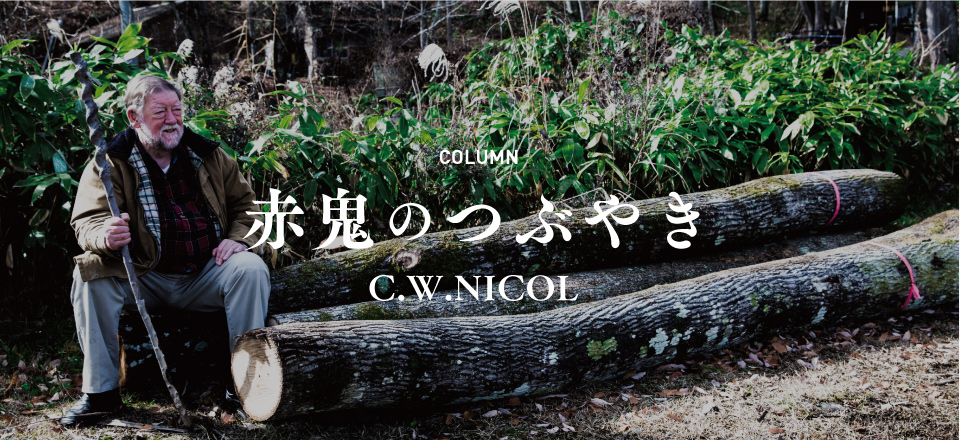Column
【赤鬼のつぶやき C.W.ニコル】リョウブ(JAPANESE CLETHRA)
8月の初めごろ、アファンホーズロッジの建物のすぐ目の前に、白い小花が集まって咲いている木があります。アファンの森のなかにも小さなものがあるのですが、これまで名前がわからなかった樹のひとつです。木の高いところの葉は深い緑で、下の方の葉はやや明るい緑、葉の葉脈には細かい毛が生えています。8月の終わり頃になると、花序の長い軸に胡椒の粒のような実を実らせます。
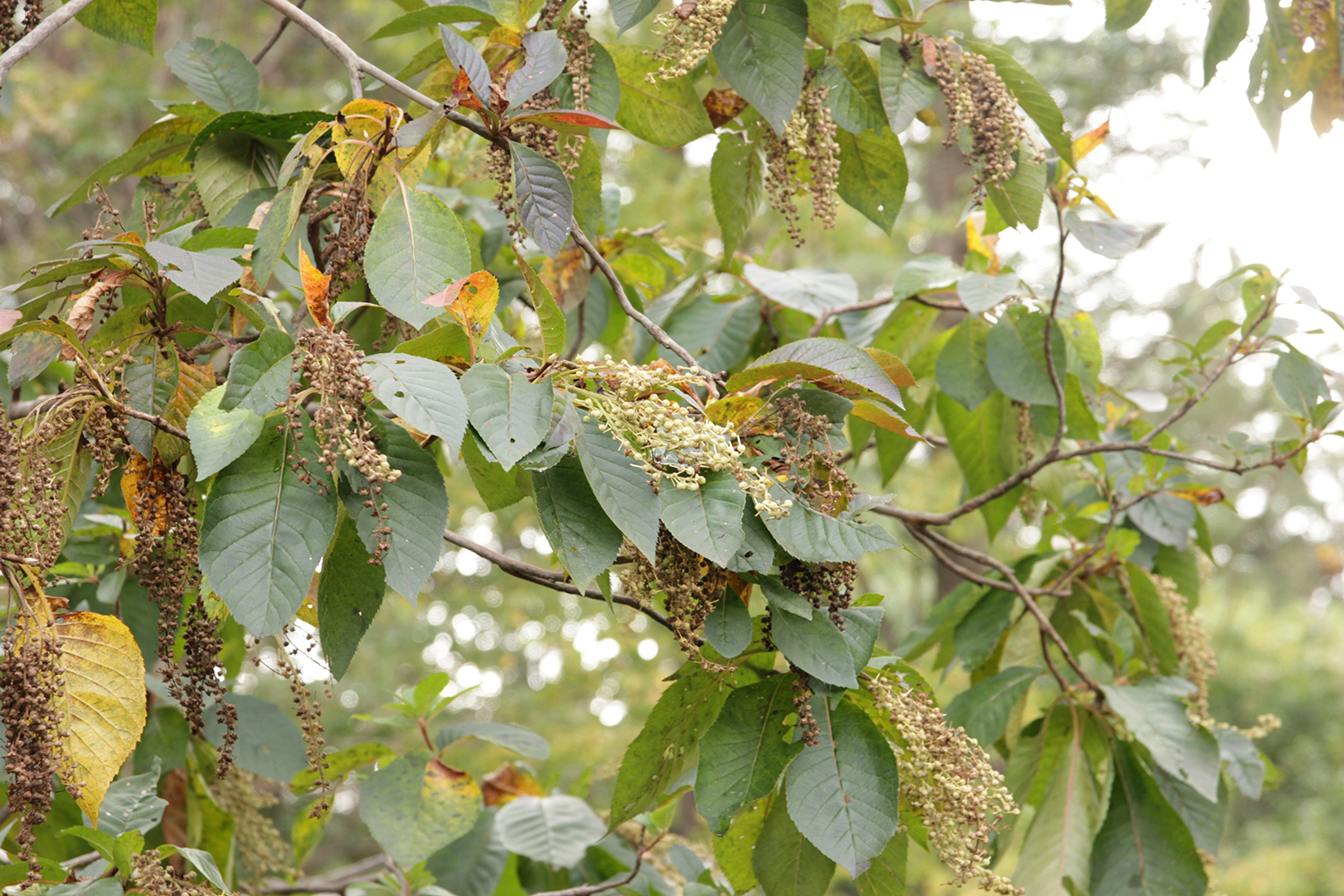
そして日本語でこの木は「リョウブ」と呼ばれていることをアファンの森財団のスタッフから聞き、ようやく教科書とインターネットで調べることができたのでした。リョウブ(Japanese Clethra)は、日本、韓国、中国に自生しています。学名はClethra barbinervisで、10メートルまでは育つことがあるようですが、たいていはもう少し小ぶりです。最初にヨーロッパに持ち込まれたのは1870年でした。1968年の明治維新のあと、異国情緒がある、特に花の咲く植物を求めて日本にやってきたプラントハンターが殺到したからです。
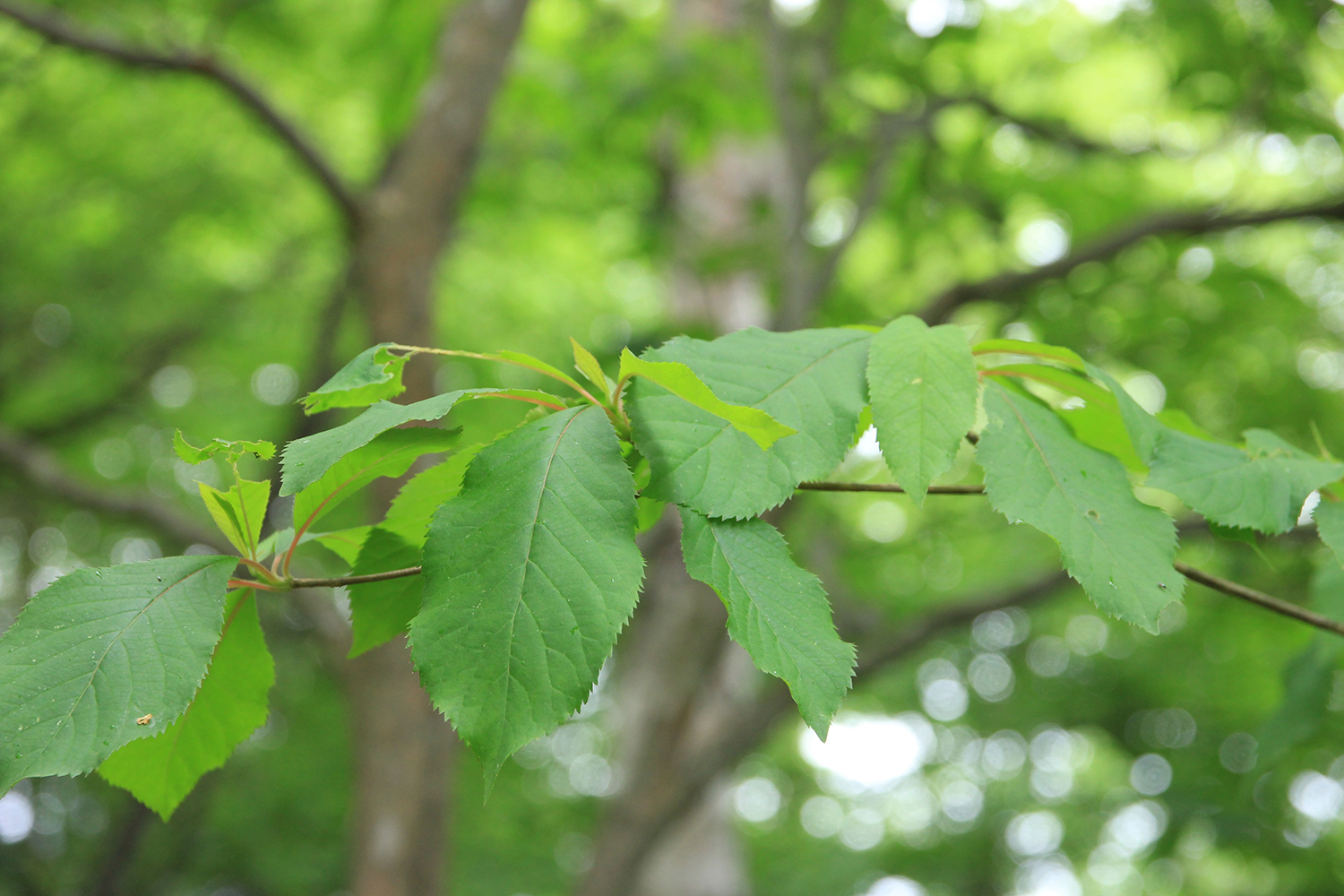
リョウブの若葉は昔から天ぷらなどの食用にされてきました。実も食べられるのかどうかわたしは知らないのですが、冬になると実を食べた鳥たちによって種があちこちに拡散され繁殖しています。ハチなどの昆虫によって受粉するようです。堅くて密度の高い材で、焼いて炭にするために使ったり(ただ、炭の材料になるのはナラやミズナラが多いです)用具や柱に加工します。ヨーロッパやアメリカでは、観賞用の植物として重用されています。
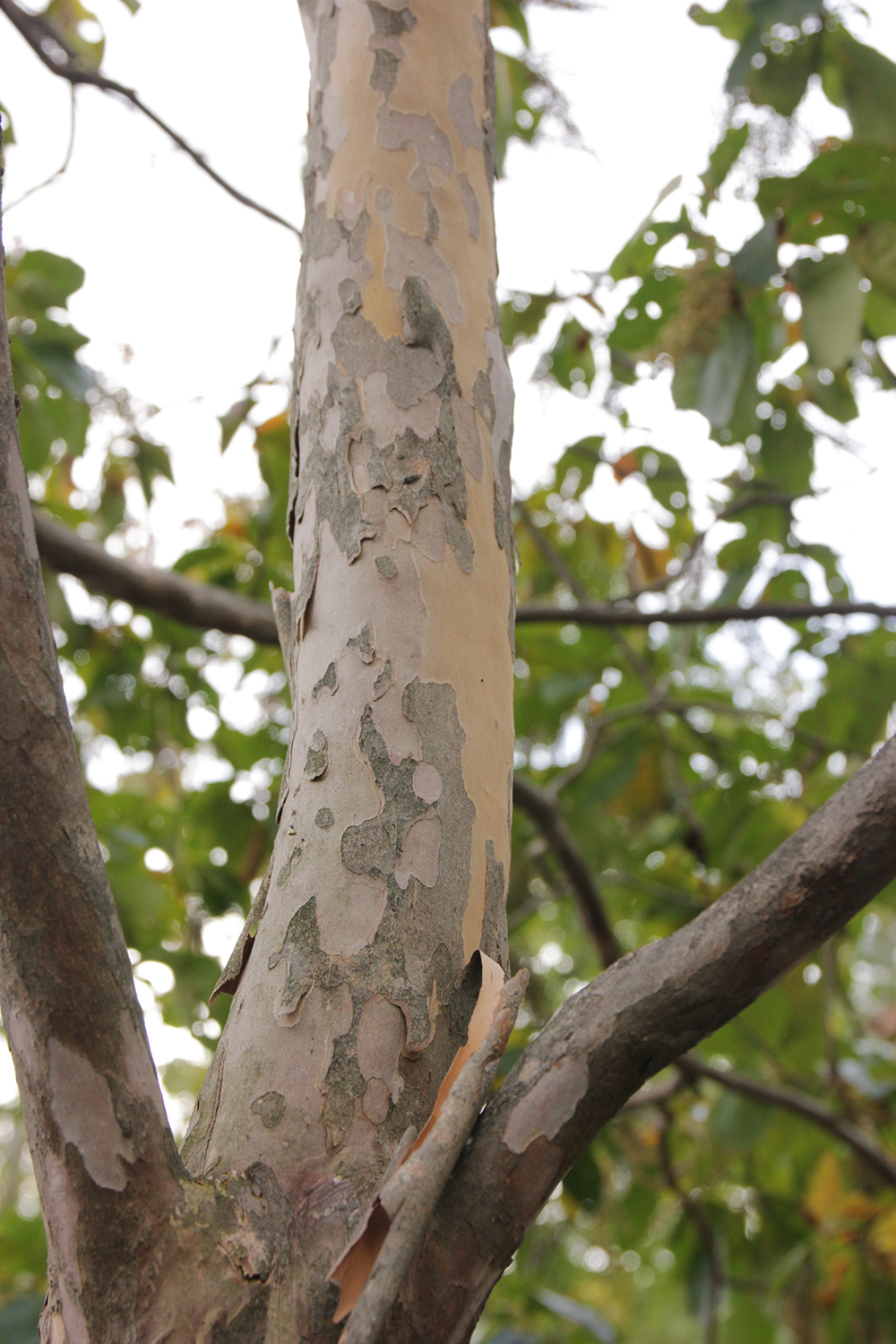
印象的な白い花々は甘い匂いがして、秋に紅葉する葉も美しいです。剥がれてグレーと茶色が混ざった色になる木の幹が、冬には目を惹きます。わたしたちのウマが冬のうちから桜の幹をはがして食べてしまうにもかかわらず、リョウブにはまったく口をつけないのを見ると、リョウブが、木々の若芽を食べてしまうシカの食害に対して強いということも納得できます。
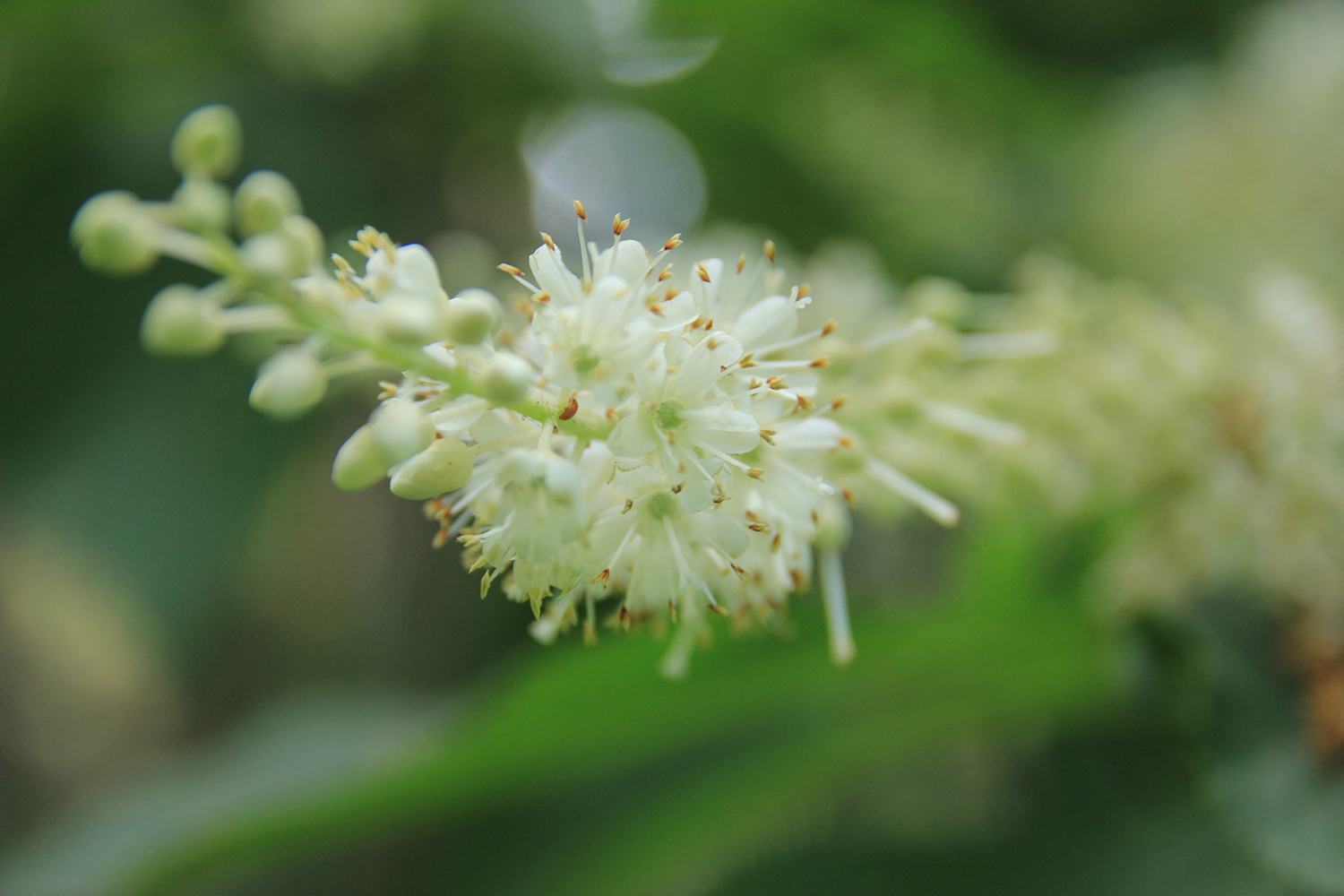
日本に自生しているたくさんの樹木について、わたしは残りの人生で学び続けることになるでしょう。
C.W.ニコル
2018年9月
写真提供:C.W.ニコル・アファンの森財団
RYOUBU – JAPANESE CLETHRA
We have a small tree in our Afan woods and just across from the entrance of our Horse Lodge that blossoms with clusters of tiny white flowers in early August. This was a tree whose name I did not know. The leaves were dark green on top and lighter green underneath, with fine, hairy veins. In late August it produced pepper-sized berries on long stalks.
Finally one of our trust staff told me that its name in Japanese is ‘ryoubu’ and I was able to look it up in textbooks and online.
Ryoubu, or Japanese Clethra, is native to Japan, Korea and China. Its scientific name is Clethra barbinervis. They can grow to a height of up to ten metres, but are usually smaller.
It was first introduced to Europe in 1870 when there was an influx of foreign plant hunters coming into Japan after the Meiji Restoration in 1868, looking for exotic plants and especially flowering trees.
The young leaves of ryoubu have been traditionally eaten in Japan, especially as tempura. I don’t know if the berries are edible, but presumable birds will eat them in winter because the trees are propagated by their seeds. They are pollinated by bees and other insects.
The wood is hard and dense and has been used for making charcoal (although we usually use nara and mizunara oak wood) and also for making utensils and as alcove posts. In Europe, and then America, it was treasured as an ornamental plant. The striking white flowers that are sweetly fragrant and the tree has lovely autumn leaves. The grayish-brown flaking bark is attractive in winter. It is apparently resistant to deer browsing, which I can understand because although our horses started to strip the bark from our cherry trees last winter, they didn’t touch the ryoubu bark.
Japan has such a large number of native trees that I will have to keep on learning for the rest of my life.
C.W. Nicol
September 2018
C.W.ニコル
作家・1940年イギリス南ウェールズ生まれ。1995年日本国籍取得。カナダ水産調査局北極生物研究所の技官・環境局の環境問題緊急対策官やエチオピアのシミエン山岳国立公園の公園長など世界各地で環境保護活動を行い、1980年から長野県在住。1984年から荒れ果てた里山を購入し「アファンの森」と名づけ、森の再生活動を始める。2005年、その活動が認められエリザベス女王から名誉大英勲章を賜る。2011年、2016年に天皇、皇后両陛下がアファンの森をご視察された。


